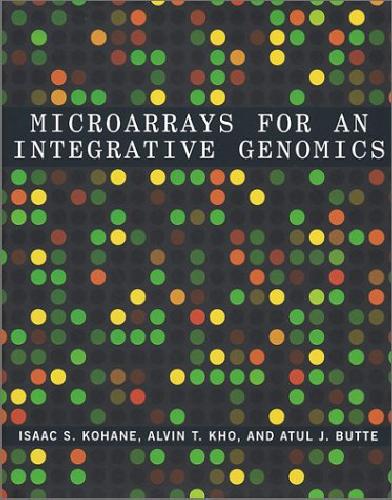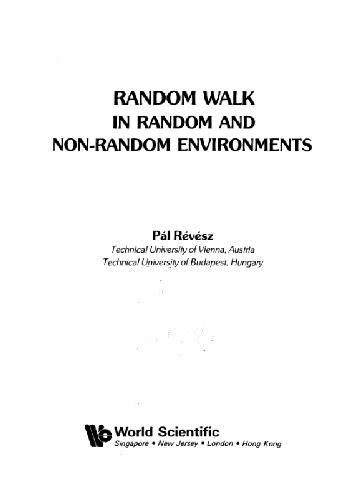9788180520556, 8180520552
Table of contents :
Header……Page 0
Table of Contents……Page 2
Microarrays for an Integrative Genomics……Page 6
Foreword……Page 7
Preface……Page 8
Acknowledgments……Page 9
1.1 The Future Is So Bright–……Page 12
1.2 Functional Genomics……Page 14
1.2.1 Informatics and advances in enabling technology……Page 17
1.2.2 Why do we need new techniques?……Page 19
1.3 Missing the Forest for the Dendrograms, or One Aspect of Integrative Genomics……Page 20
1.3.1 Sociology of a functional genomics pipeline……Page 23
1.4 Functional Genomics, Not Genetics……Page 24
1.4.1 In silico analysis will never substitute for in vitro and in vivo……Page 26
1.5.1 Biological caveats in mRNA measurements……Page 28
1.5.2 Sequence-level genomics……Page 32
1.5 Basic Biology……Page 34
2.1.1 Experiment design space……Page 37
2.1.2 Expression space……Page 39
2.1.3 Exercising the expression space……Page 43
2.1.4 Discarding data and low-hanging fruit……Page 49
2.2 Gene-Clustering Dogma……Page 53
2.2.1 Supervised versus unsupervised learning……Page 54
2.2.2 Figure of merit: The elusive gold standard in functional genomics……Page 56
3.1 Generic Features of Microarray Technologies……Page 60
3.1.1 Robotically spotted microarrays……Page 63
3.1.2 Oligonucleotide microarrays……Page 65
3.2 Replicate Experiments, Reproducibility, and Noise……Page 75
3.2.1 What is a replicate experiment? A reproducible experimental outcome?……Page 76
3.2.2 Reproducibility across repeated microarray experiments: Absolute expression level and fold difference……Page 77
3.2.3 Cross-plat form (technology) reproducibility……Page 80
3.2.4 Pooling sample probes and PCR for replicate experiments……Page 81
3.2.5 What is noise?……Page 82
3.2.6 Sources and examples of noise in the generic microarray experiment……Page 83
3.2.7 Biological variation as noise: The Human Genome Project and irreproducibility of expression measurements……Page 91
3.2.8 Managing noise……Page 92
3.3 Prototypical Objectives and Questions in Microarray Analyses……Page 95
3.3.1 Two examples: Inter-array and intra-array…….Page 96
3.4 Preprocessing: Filters and Normalization……Page 98
3.4.1 Normalization……Page 99
3.5 Background on Fold……Page 103
3.5.1 Fold calculation and significance……Page 105
3.5.2 Fold change may not mean the same thing in different expression measurement technologies……Page 107
3.6 Dissimilarity and Similarity Measures……Page 109
3.6.1 Linear correlation……Page 110
3.6.2 Entropy and mutual information……Page 111
3.6.3 Dynamics……Page 116
4.2 What Can Be Clustered in Functional Genomics?……Page 119
4.4 Hierarchy of Bioinformatics Algorithms Available in Functional Genomics……Page 120
4.5 Data Reduction and Filtering……Page 123
4.5.2 Low entropy filter……Page 124
4.5.4 Target ambiguity filter……Page 127
4.6 Self-Organizing Maps……Page 128
4.6.1 K-means clustering……Page 132
4.7 Finding Genes That Split Sets……Page 134
4.8 Phylogenetic-Type Trees……Page 136
4.8.1 Two-dimensional dendrograms……Page 140
4.9 Relevance Networks……Page 142
4.10 Other Methods……Page 149
4.11 Which Technique Should I Use?……Page 150
4.12.1 Permutation testing……Page 153
4.12.2 Testing and training sets……Page 154
4.12.3 Performance metrics……Page 156
4.12.4 Receiver operating characteristic curves……Page 157
4.13.2 Reverse-engineering and modeling a genetic network using limited data……Page 159
4.13.3 Bayesian networks for functional genomics……Page 162
Overview……Page 168
5.1 Ontologies……Page 169
5.1.1 Bio-ontology projects……Page 170
5.1.2 Advanced knowledge representation systems for bio-ontology……Page 173
5.2 Expressivity versus Computability……Page 174
5.3 Ontology versus Data Model versus Nomenclature……Page 176
5.3.1 Exploiting the explicit and implicit ontologies of the biomedical literature……Page 177
5.4 Data Model Introduction……Page 181
5.5 Nomenclature……Page 186
5.5.1 The unique gene identifier……Page 189
5.6.2 Problems in determining the results……Page 192
6.1 Electronic Medical Records……Page 194
6.2 Standardized Vocabularies for Clinical Phenotypes……Page 195
6.3 Privacy of Clinical Data……Page 196
6.3.1 Anonymization……Page 197
6.4 Costs of Clinical Data Acquisition……Page 198
7.1 New Methods for Gene Expression Profiling……Page 200
7.1.1 Electronic positioning of molecules: Nanogen……Page 202
7.1.2 Ink-jet spotting of arrays: Agilent……Page 203
7.1.3 Coded microbeads bound to oligonucleotides: Illumina……Page 204
7.1.4 Serial Analysis of Gene Expression (SAGE)……Page 206
7.2 Respecting the Older Generation……Page 208
7.2.1 The generation gap……Page 209
7.2.2 Separating the wheat from the chaff……Page 210
7.3 Selecting Software……Page 211
7.4 Investing in the Future of the Genomic Enterprise……Page 214
B……Page 216
E……Page 217
H……Page 218
O……Page 219
P……Page 220
T……Page 221
References……Page 222
List of Figures……Page 232
List of Tables……Page 241







Reviews
There are no reviews yet.